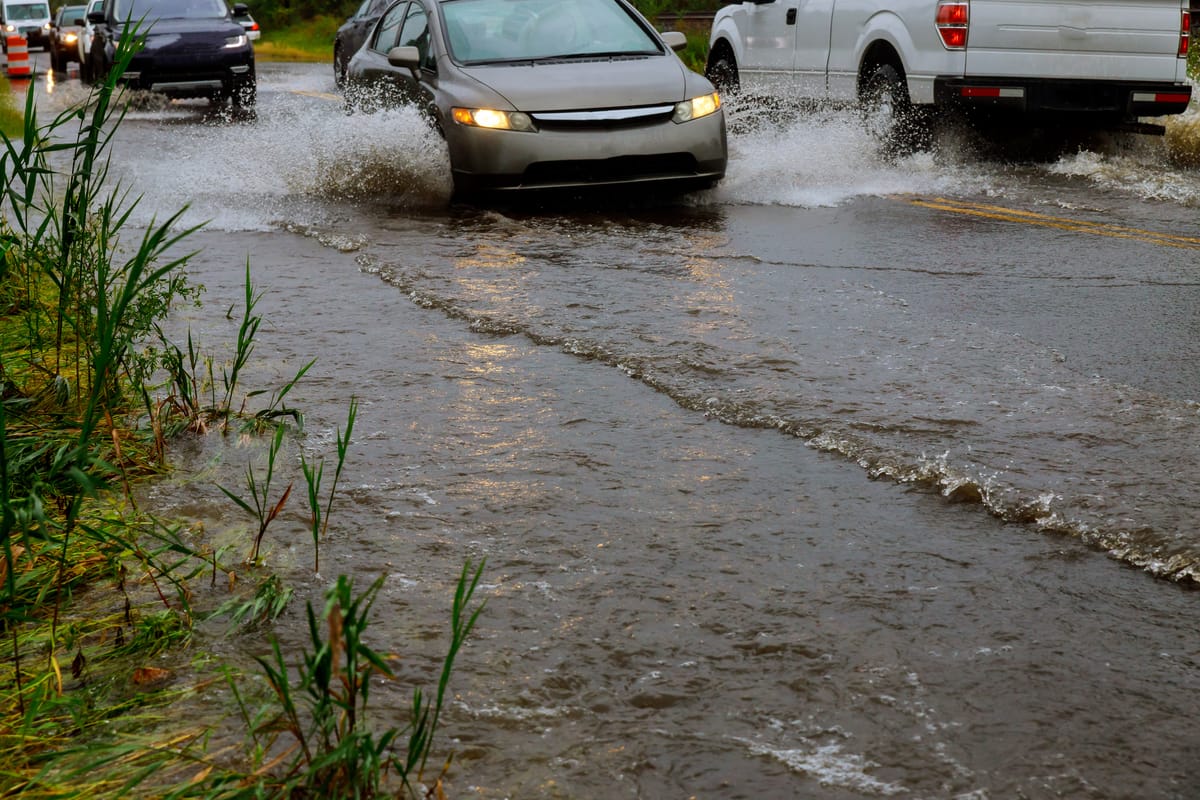How to Identify Flood-Damaged Cars Before Buying in Kenya

Flash floods are no stranger to Kenya. From the Nairobi CBD to Kisumu backroads, our roads flood fast and hard. But while most of us focus on the visible damage to roads and homes, there’s another sneaky aftermath that creeps into car yards and classifieds: flood-damaged vehicles. And they’re often dressed up and waiting for an unsuspecting buyer.
If you're shopping for a used car in Kenya—whether from a dealer, online platform, or private seller - knowing how to detect water damage isn’t just smart. It’s essential.
As a car enthusiast who’s inspected hundreds of vehicles over the years, let me walk you through exactly what to look out for - before you hand over a single shilling.
Why Flood-Damaged Cars Are a Bigger Risk Than You Think
Water can quietly destroy a vehicle from the inside out. We're talking about damaged electrical systems, corroded engine components, and mouldy, bacteria-ridden interiors. These issues might not show up immediately—but give it a few weeks and you'll be paying for repairs you never planned for.
In Kenya, where second-hand imports dominate the market (over 70% of cars on our roads!), flood-damaged units from local floods or abroad can easily end up repainted, polished, and relisted. And once you've bought it, it’s your problem—from insurance headaches to safety issues and rock-bottom resale value.
Top Signs of a Flood-Damaged Car (Even If It Looks Clean)
1. Smell Test: Let Your Nose Lead the Way
Step into the car and take a deep breath. Smell musty, mildew-like odours? That’s moisture trapped deep inside fabrics and padding. Or maybe it reeks of air freshener? That's a red flag too—someone’s probably masking something.
Bonus tip: Open the glove box, sniff under the seats, and crack open the boot. Smells don’t lie.
2. Visual Inspection: Where Sellers Hope You Won’t Look
Even the slickest sellers can’t hide every trace of flood damage. Focus your attention on:
- Carpet condition & fit: Mismatched or brand-new carpets can mean the originals were waterlogged. Check under floor mats and in corners for dampness, mud stains, or salt residue.
- Rust in strange places: Peek under the dashboard, around door hinges, and under the seats. Rusty seat rails or corroded bolts are silent giveaways.
- Foggy headlights/taillights: Condensation trapped inside lenses is a classic post-flood clue.
- Mud/silt in odd areas: Check the spare tyre well, under the bonnet, and inside the boot. If you see dried silt or fine mud in hard-to-reach areas—walk away.
3. Test Every Electrical Component (Seriously)
Floodwater and electronics are a bad mix—especially if the water was salty or dirty, which is common in Nairobi and Mombasa floods.
Run a full check on:
- Power windows and locks
- Headlights, taillights, and cabin lights
- Dashboard warning lights
- A/C, heater, and fan speeds
- Radio, touchscreen, USB ports
- Windshield wipers and washer
- Side mirror controls and seat adjusters
Take your time. Don’t let a pushy seller rush you. Water-damaged electronics often act up once they warm up or after extended use.
4. Check Where Water Hides: Seats, Seatbelts, and Interiors
- Seatbelts: Pull them out all the way. Look for watermarks, silt, or stiffness. A rarely-checked flood indicator.
- Seat frames & tracks: Rust under the seats? That’s not from age—it’s from water.
- Dashboard & glove box: Use a flashlight to spot dirt or rust tucked deep inside. These areas are hard to clean, so damage here usually means the car got hit hard.
5. Open the Bonnet: Your Engine Can Tell a Story
Even if the car purrs like a kitten, don’t skip this.
Pop the bonnet and inspect:
- Air filter: Pull it out. If it’s stained, damp, or crumbly, water likely entered the intake system.
- Dipsticks: Oil or transmission fluid that looks milky = water contamination.
- Corrosion: Rust around bolts, wiring connectors, or engine mounts is bad news.
- Mud/silt in crevices: Check near the alternator, fuse box, behind battery terminals, and around the firewall. These spots collect flood residue even after detailing.
Never start an engine if you suspect hydrolock (water in the cylinders). It can cause catastrophic damage.
Why This Matters More Than Ever in Kenya
Kenya’s used car market is booming—but our roads flood like clockwork during the long rains. Combine that with grey imports from Japan or the UK (which also face floods), and the risk of unknowingly buying a flood-affected vehicle is high.
And let’s be honest—most sellers won’t disclose a car’s full history. So you’ve got to protect yourself. A few minutes of smart inspection could save you from months of stress and thousands in repairs.
Smart Buyer Checklist: Before You Buy That Car
- Trust your senses—smell, sight, and touch.
- Don’t rush. If something feels off, it probably is.
- Bring a trusted mechanic for a second opinion.
- Always ask for the car’s inspection report and import history.
- Walk away from any deal that feels too eager to close.
Or, Skip the Guesswork With Peach Cars
If you want peace of mind, don’t just gamble with random listings. Every car on Peach Cars goes through a rigorous 288-point inspection, checking everything from the engine to the smallest interior detail—yes, even for flood damage.
With Peach, you get a full condition report, real photos, and honest pricing. It’s how thousands of Kenyans are buying better, smarter, and safer.
Ready to start your search?
Browse verified, flood-free cars today at Peach Cars—because you deserve to drive with confidence.




